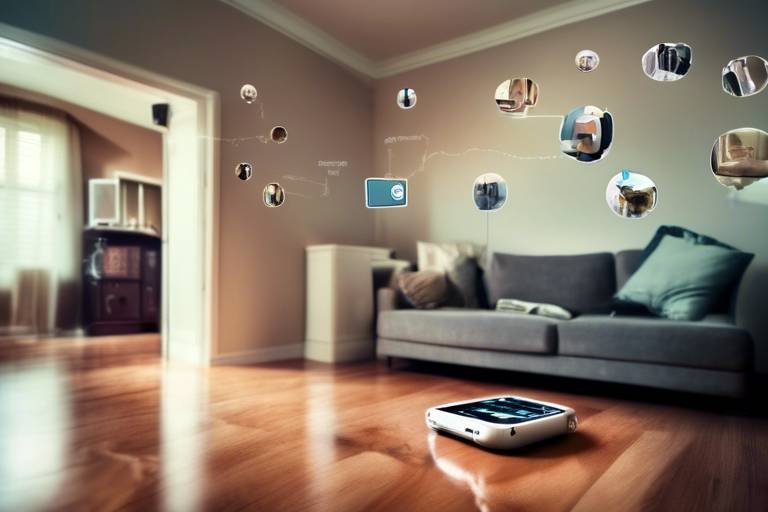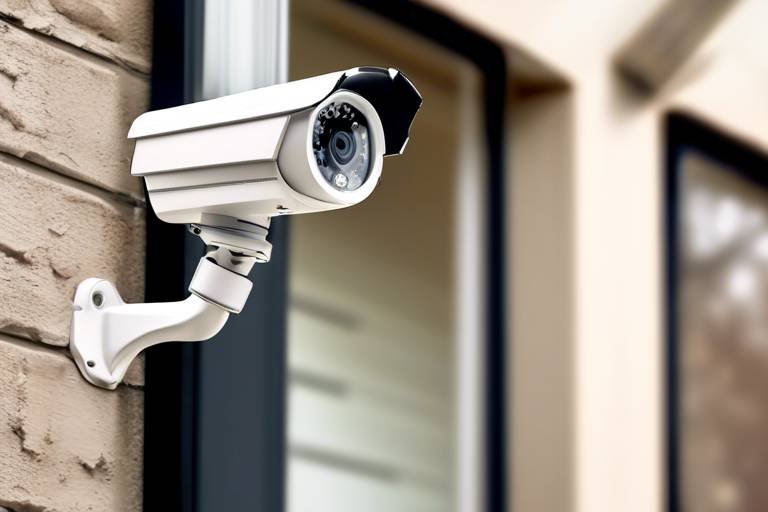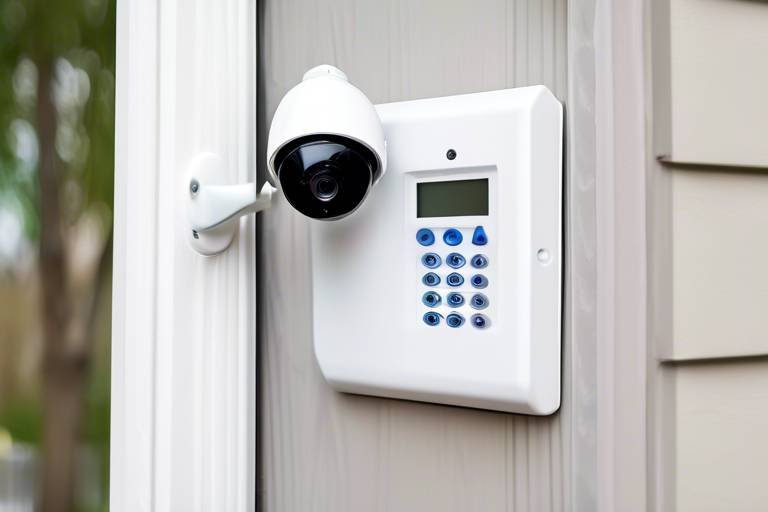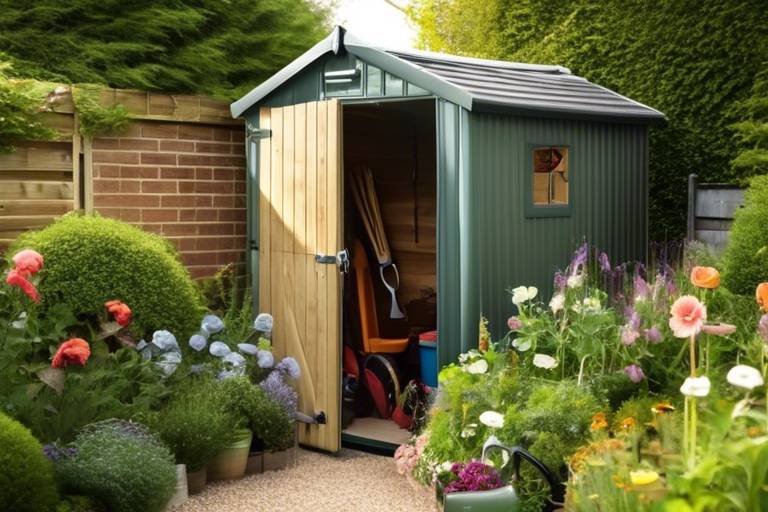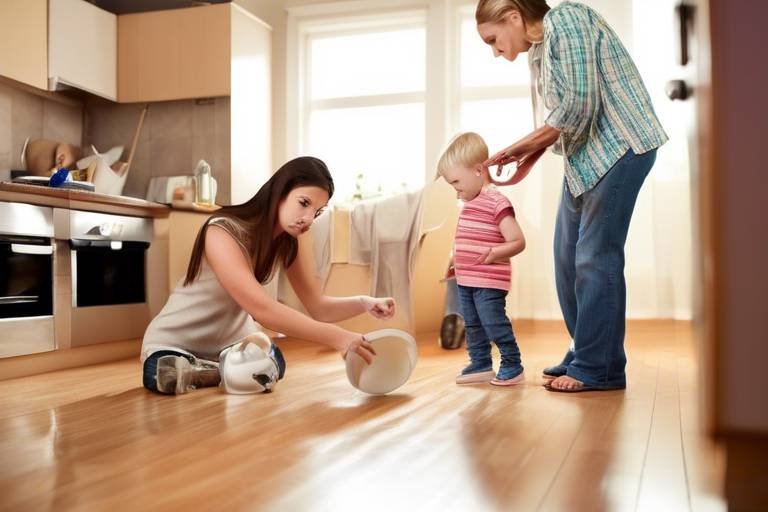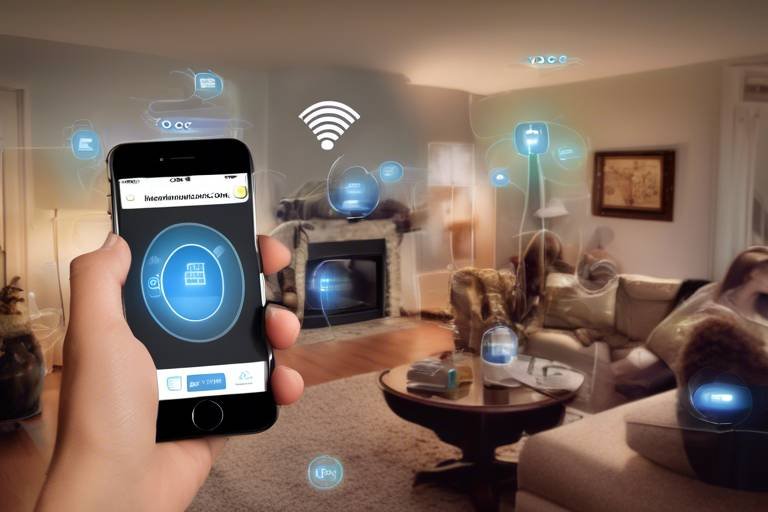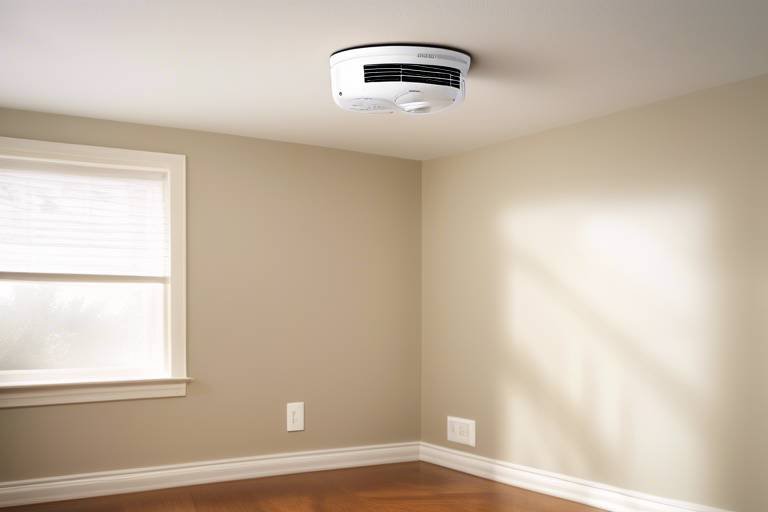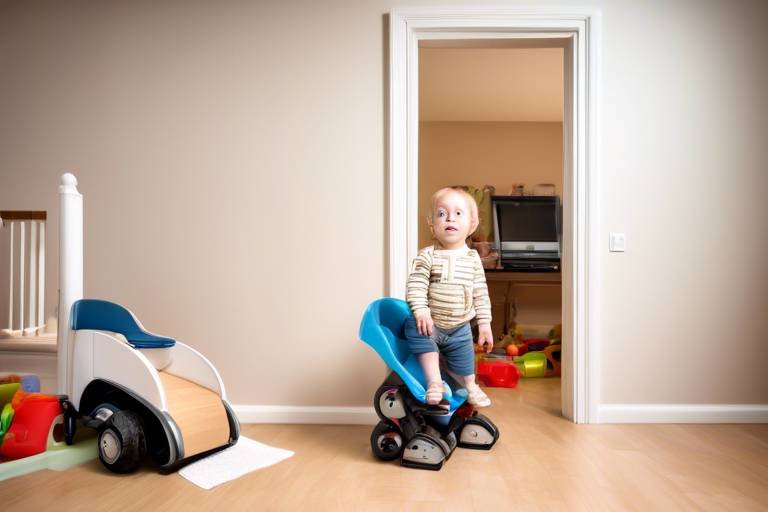The Role of Technology in Home Safety
In today's fast-paced world, the importance of home safety has never been more pronounced. With the rise of modern technology, homeowners now have access to an array of innovative solutions designed to enhance security and provide peace of mind. Imagine a world where your home is not just a shelter but a fortress, equipped with intelligent systems that keep watch over your family and belongings. This article delves into how technology has revolutionized home safety, exploring various devices and systems that contribute to secure living environments. We'll discuss the benefits these technologies bring, as well as some potential drawbacks, ensuring you have a comprehensive understanding of what’s available in the market.
Smart security systems have emerged as a cornerstone of modern home safety. These sophisticated setups integrate alarms, cameras, and sensors to provide comprehensive protection. Imagine receiving real-time alerts on your smartphone whenever a potential threat is detected—this is the reality of smart security systems. Not only do they help deter crime, but they also give homeowners the peace of mind that comes with constant monitoring. With features like motion detection and remote access, these systems ensure that you are always informed about what’s happening around your home, whether you’re on vacation or just at work.
Home automation technologies are significantly reshaping how we think about safety. By allowing homeowners to control lighting, locks, and appliances from anywhere, these technologies enhance security while promoting energy efficiency. Picture this: you’re on your way home, and with a simple tap on your phone, you can turn on the lights, unlock the door, and set your thermostat to a cozy temperature. This convenience not only makes life easier but also adds an extra layer of security. For instance, automated lighting can be programmed to mimic your presence at home, deterring potential intruders.
One of the most exciting advancements in home safety is the development of smart locks. These innovative devices eliminate the need for traditional keys, offering keyless entry options that are both convenient and secure. Imagine being able to manage access to your property right from your smartphone! Smart locks come with features like temporary access codes, allowing you to grant entry to guests or service providers without compromising your security. This is especially useful for busy families who may need to let in a neighbor or a repairman while they’re out.
Remote access is a game-changer for homeowners. With the ability to monitor your property from anywhere, you can check security feeds, lock doors, and receive alerts directly on your mobile device. This constant oversight ensures that you’re never out of touch with your home’s security status. Imagine being at a dinner party and getting an alert that your front door was left unlocked—you can simply lock it remotely without missing a beat!
Moreover, smart locks can seamlessly integrate with other home automation devices, creating a cohesive security system. This interconnectedness enhances overall safety and convenience, allowing you to manage various aspects of your home from a single app. For instance, if your security camera detects motion, it can alert your smart lock to send you a notification, ensuring you are always in control.
Surveillance cameras play a crucial role in home safety, serving as both a deterrent to crime and a means of gathering evidence in case of incidents. Modern cameras offer high-definition video, night vision, and cloud storage options, making them an invaluable asset for any homeowner. Imagine having the ability to review footage from your living room while you’re thousands of miles away—this level of oversight is now possible with advanced surveillance technology.
In addition to security systems, environmental sensors are vital for detecting hazards such as smoke, carbon monoxide, and water leaks. These devices alert homeowners to potential dangers, allowing for quick responses that can prevent serious damage. Think about it: a smoke detector that not only sounds an alarm but also sends an alert to your phone means you can take action even when you’re not home.
Advanced smoke and carbon monoxide detectors provide real-time alerts and can be integrated with smart home systems for enhanced safety. Regular maintenance ensures their reliability in emergencies, making it crucial for homeowners to test these devices periodically. A well-maintained detector can be the difference between life and death in a fire or carbon monoxide leak.
Water leak detection systems are another essential component of home safety. These systems monitor for leaks and moisture levels, preventing costly damage before it escalates. Imagine receiving an alert on your phone the moment a leak is detected in your basement—this allows for prompt action and can save you thousands in repairs.
Lastly, emergency response systems, such as medical alert devices, provide immediate assistance in case of emergencies. These systems ensure that help is always just a button press away, enhancing overall safety for everyone in the home. For seniors or individuals with health concerns, these devices can be a lifeline, allowing them to call for help quickly and easily.
Medical alert devices are vital for seniors or individuals with health concerns. They allow users to call for help quickly, providing peace of mind for both users and their families. Imagine knowing that your loved one can reach out for help at any moment, no matter where they are in the house.
Establishing a home emergency plan ensures that all family members know what to do in case of an emergency. This preparedness can significantly improve safety and response times during crises. Consider holding regular family meetings to discuss your emergency plan, ensuring that everyone is on the same page. This proactive approach can make all the difference when seconds count.
- What are the benefits of smart security systems? Smart security systems provide real-time monitoring, alerts, and remote access, ensuring homeowners are informed about potential threats.
- How do environmental sensors enhance home safety? Environmental sensors detect hazards like smoke and carbon monoxide, alerting homeowners to potential dangers and allowing for quick responses.
- Are smart locks secure? Yes, smart locks offer enhanced security features, including keyless entry and temporary access codes, making them a secure option for homeowners.
- What should I include in my home emergency plan? Your home emergency plan should include escape routes, emergency contacts, and a meeting place outside the home.

Smart Security Systems
This article explores how modern technology enhances home safety, examining various devices and systems that contribute to secure living environments while discussing their benefits and potential drawbacks.
In today's fast-paced world, have emerged as a game-changer in home safety. Imagine a world where your home can alert you to potential threats while you're out enjoying a night with friends or even while you're on vacation soaking up the sun. These systems integrate alarms, cameras, and sensors to provide comprehensive protection, ensuring that you are always in the loop regarding your home's security status. With real-time monitoring and instant alerts sent directly to your smartphone, you can feel confident knowing that your home is under constant surveillance.
One of the most appealing aspects of smart security systems is their versatility. They can be tailored to fit any home, regardless of size or layout. Whether you live in a cozy apartment or a sprawling house, there are smart security solutions that can meet your needs. For instance, you can choose to install a simple camera system that covers the main entrances or a more elaborate setup that includes motion sensors and glass-break detectors throughout your property.
Furthermore, many smart security systems come equipped with features that allow for remote access. This means that you can check in on your home from anywhere in the world, provided you have an internet connection. Imagine being on a beach in Hawaii, and with just a few taps on your phone, you can view live video feeds from your security cameras. This level of control not only enhances your peace of mind but also acts as a powerful deterrent against potential intruders.
However, as with any technology, there are both benefits and drawbacks to consider. While smart security systems offer enhanced safety and convenience, they also come with potential vulnerabilities. Cybersecurity is a major concern, as hackers can potentially gain access to your system if it’s not properly secured. Therefore, it’s crucial to choose reputable brands and ensure that you regularly update your system's software to protect against breaches.
In summary, smart security systems are a vital component of modern home safety. They provide homeowners with the ability to monitor their properties in real-time, enhance security through various integrated features, and offer peace of mind that was hard to come by in the past. As technology continues to advance, we can only expect these systems to become even more sophisticated and user-friendly, making our homes safer than ever before.
- What are the key features of smart security systems? Smart security systems typically include alarms, surveillance cameras, motion detectors, and remote monitoring capabilities.
- Are smart security systems easy to install? Many systems are designed for easy DIY installation, while others may require professional installation for optimal performance.
- How do I protect my smart security system from hackers? Regularly update your system's software, use strong passwords, and choose reputable brands that prioritize cybersecurity.
- Can I integrate smart security systems with other home automation devices? Yes, many smart security systems can seamlessly integrate with smart lighting, smart locks, and other home automation technologies.

Home Automation for Safety
Home automation has revolutionized the way we think about safety in our living spaces. Imagine being able to control your entire home from the palm of your hand! With the rise of smart technology, homeowners can now manage everything from lighting to security systems with just a few taps on their smartphones. This not only enhances security but also offers a level of convenience that was unimaginable just a few years ago. Think about it: you can turn on outdoor lights to deter potential intruders or lock your doors while lying in bed—all without getting up!
One of the most significant benefits of home automation is the ability to create a secure environment effortlessly. For instance, smart lighting systems can be programmed to mimic your daily routines, illuminating your home at dusk and turning off at dawn. This can create the illusion that someone is home, even when you're away. Additionally, these systems can be integrated with motion sensors, which means lights can automatically turn on when someone approaches your front door. It's like having a friendly sentinel watching over your home!
Moreover, smart locks are another fantastic feature of home automation. These locks eliminate the need for physical keys and offer a range of security features that traditional locks simply can't match. With smart locks, you can grant access to friends or family members by sending them a temporary access code. This is particularly useful for those who may need to enter your home while you're away, like a neighbor checking on your pets or a service worker. The peace of mind that comes from knowing you can control access to your home remotely is invaluable.
With remote access capabilities, homeowners can monitor their properties from virtually anywhere. Ever found yourself wondering if you locked the front door after leaving for vacation? With home automation, you can simply check your smartphone app to confirm. This feature allows users to view security feeds, lock doors, and receive real-time alerts about any suspicious activity. It's like having a personal security guard that never sleeps!
In addition to smart locks, home automation systems can also integrate with various other devices. For example, when your security cameras detect movement, they can automatically trigger outdoor lights to turn on, creating a well-lit environment that can deter intruders. This interconnectedness not only enhances security but also streamlines your home management experience.
Home automation isn’t just about security; it also plays a crucial role in detecting environmental hazards. Imagine being alerted to a smoke or carbon monoxide leak while you’re at work. Environmental sensors can detect these hazards and send immediate notifications to your smartphone, allowing you to take action before the situation escalates. This instant communication can save lives and protect your property from severe damage.
In conclusion, the integration of home automation technologies into our lives has transformed the concept of home safety. With the ability to control and monitor your home from anywhere, you can enjoy peace of mind knowing that your living environment is secure. As these technologies continue to evolve, we can expect even more innovative solutions that will further enhance our safety and convenience.
- What is home automation? Home automation refers to the use of technology to control various home systems, such as lighting, security, and appliances, remotely through a smartphone or other devices.
- How does home automation enhance safety? It allows homeowners to monitor and control their home security systems, locks, and environmental sensors, providing real-time alerts and remote access for added peace of mind.
- Are smart locks secure? Yes, smart locks offer advanced security features such as keyless entry, temporary access codes, and remote locking capabilities, making them a secure option for home safety.
- Can I integrate different smart devices? Absolutely! Many home automation systems allow for integration between devices, creating a cohesive security and home management system.
- What should I do if my environmental sensors alert me? If you receive an alert from your environmental sensors, such as smoke or carbon monoxide detection, evacuate your home immediately and call emergency services.

Smart Locks
In today's fast-paced world, have emerged as a game-changer in home security. Imagine never having to fumble for your keys again! With smart locks, you can enjoy the convenience of keyless entry while enhancing your home’s safety. These innovative devices allow homeowners to manage access to their property with just a few taps on their smartphones or even through voice commands. It’s like having a personal doorman who never takes a day off!
One of the standout features of smart locks is their ability to create temporary access codes. This is particularly useful for guests, service providers, or even family members who may need to enter your home while you're away. You can set codes that expire after a certain time, ensuring that your home remains secure without compromising on convenience. Just think about it: you can let the plumber in while you’re at work without having to rush home!
Moreover, smart locks can often integrate seamlessly with other home automation systems. This interconnectedness means that when you lock your door, your security cameras can activate, and your lights can turn off, creating a comprehensive security protocol. It’s not just about locking your door; it’s about creating a fortress of safety that responds to your every command.
However, as with any technology, there are some considerations to keep in mind. While smart locks offer convenience and enhanced security, they also require a reliable power source and internet connection. If the power goes out or your Wi-Fi fails, you might find yourself locked out. But fear not! Many smart locks come with a backup key option, ensuring that you’re never completely locked out of your own home.
In summary, smart locks are revolutionizing home security by providing a blend of convenience, control, and peace of mind. They empower homeowners to manage their property access effortlessly while enhancing overall safety. So, if you’re looking to upgrade your home security, investing in a smart lock could be one of the best decisions you make!
- What happens if the battery of my smart lock dies? Most smart locks have a backup key option, allowing you to access your home even if the battery is dead.
- Can I control my smart lock remotely? Yes, most smart locks can be controlled via a smartphone app, allowing you to lock or unlock your door from anywhere.
- Are smart locks safe from hacking? While no device is entirely hack-proof, reputable brands implement strong encryption methods to protect your data.
- Can I give temporary access codes to guests? Absolutely! Smart locks allow you to create temporary access codes for guests, which can be set to expire after a certain period.
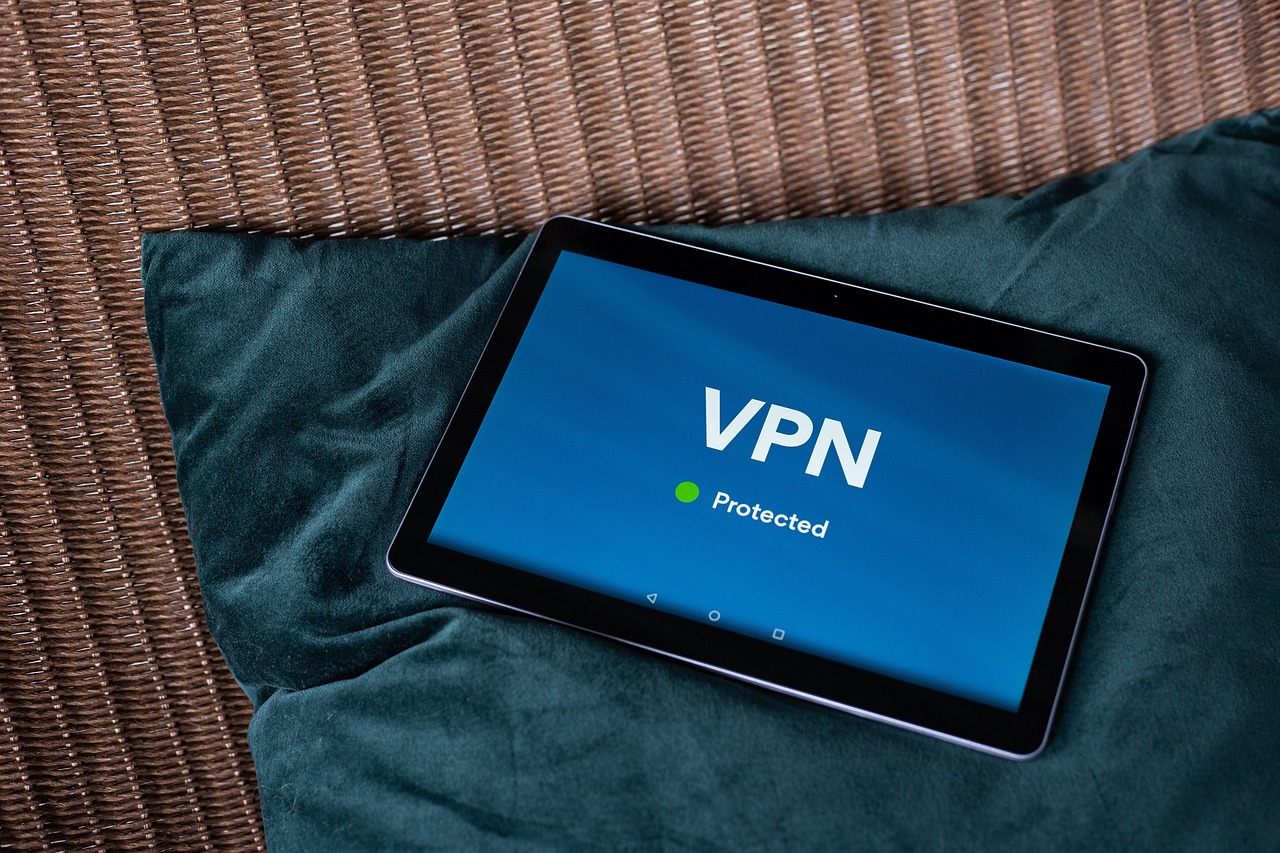
Remote Access and Monitoring
Imagine being able to check on your home while sipping coffee at your favorite café or lounging on a beach thousands of miles away. have revolutionized the way we secure our homes, providing homeowners with the ability to stay connected to their property from virtually anywhere. With just a few taps on your smartphone, you can monitor live security feeds, lock or unlock doors, and receive instant alerts about any unusual activity. This level of control not only enhances your peace of mind but also empowers you to take action swiftly in response to potential threats.
One of the standout features of remote monitoring is the ability to view real-time video feeds from surveillance cameras installed around your home. These cameras often come equipped with high-definition capabilities, night vision, and even motion detection alerts. Imagine receiving a notification on your phone that someone is approaching your front door; you can then check the live feed and decide whether to confront the situation or alert the authorities. This feature is like having a virtual security guard at your disposal, 24/7.
Furthermore, remote access allows for seamless control over various smart devices in your home. For instance, if you left for vacation and forgot to lock the front door, you can easily do so through your smartphone. Many systems even allow you to create temporary access codes for visitors or service personnel, ensuring that you can manage who enters your home without being physically present. This not only enhances security but also adds a layer of convenience that traditional locks simply can't offer.
In addition to providing security, remote monitoring systems can help you keep tabs on your home’s overall environment. Many advanced systems integrate environmental sensors that alert you to issues like smoke, carbon monoxide, or water leaks. For example, if a water leak is detected in your basement, you can receive an alert on your phone, allowing you to address the problem before it escalates into a costly repair. In this way, remote access serves as both a security measure and a proactive maintenance tool.
However, while the benefits are numerous, it’s important to consider the potential drawbacks as well. Reliance on technology can sometimes lead to vulnerabilities, such as hacking or technical malfunctions. Therefore, it's essential to choose reputable brands and regularly update your software to safeguard your home. Additionally, ensure that your Wi-Fi network is secure, as many remote access systems depend on internet connectivity to function.
In conclusion, remote access and monitoring are indispensable tools in the modern homeowner's arsenal. They provide not only a sense of security but also the convenience of managing your home from anywhere. By leveraging these technologies wisely and remaining vigilant about security practices, you can enjoy a safer, more connected living environment.
- What is remote access in home security?
Remote access allows homeowners to control and monitor their security systems through a smartphone or computer from anywhere in the world. - Can I install remote monitoring systems myself?
Many systems are designed for easy installation, but for more complex setups, it might be beneficial to hire a professional. - Are remote access systems secure?
While they offer convenience, it’s crucial to ensure that your systems are protected with strong passwords and updated software to prevent unauthorized access. - What happens if the internet goes down?
Most systems have backup features, but it's advisable to check the specifications of your chosen system to understand its limitations.

Integration with Other Devices
In the age of smart technology, the integration of smart locks with other home automation devices has become a game changer for enhancing home security. Imagine being able to control your locks, lights, and cameras all from one central hub or app—it's like having a digital security guard at your fingertips! This interconnectedness not only simplifies your life but also creates a more robust safety net for your home.
When smart locks are linked with surveillance cameras, for example, homeowners can receive instant alerts when someone approaches their door. This synergy allows you to see who is at your door in real-time, and if you need to grant access, you can do so without even being home. It's a bit like having a virtual doorman who never takes a break!
Moreover, the integration of smart locks with home security systems enhances overall safety. For instance, if a security alarm is triggered, the smart lock can automatically lock all doors, ensuring that no one can enter while you address the situation. This feature acts as an additional layer of security, providing peace of mind when you need it most.
Another exciting aspect of these integrations is the ability to create customized security routines. Homeowners can set their smart locks to automatically lock at a certain time each night or unlock when they arrive home, thanks to geofencing technology. This not only adds convenience but also ensures that your home is secure, even if you forget to lock up as you leave.
In addition to security, these integrations can also improve energy efficiency. For instance, when you lock your door, the system can automatically turn off lights or adjust the thermostat, saving energy while you are away. It's like having a personal assistant who not only keeps your home secure but also helps you manage your energy consumption!
To sum it up, the integration of smart locks with other devices creates a seamless and efficient security system that enhances both safety and convenience. As technology continues to evolve, we can only expect these systems to become even more sophisticated and user-friendly.
- What are the benefits of integrating smart locks with other devices?
Integrating smart locks with devices like cameras and alarms enhances security by providing real-time alerts, automating responses during security breaches, and improving energy efficiency. - Can I control my smart lock remotely?
Yes, most smart locks can be controlled via smartphone apps, allowing you to lock or unlock your doors from anywhere. - Are smart locks secure?
Smart locks offer advanced security features, including temporary access codes and real-time monitoring, making them a secure option for home safety. - How do I maintain my smart lock?
Regularly update your lock's software and check for battery life to ensure optimal performance. It's also wise to have a backup key in case of emergencies.

Surveillance Cameras
When it comes to enhancing home safety, are like the vigilant sentinels of our modern-day castles. These devices do more than just capture video; they serve as a powerful deterrent against crime and provide invaluable evidence in case of incidents. Imagine having a watchful eye that never blinks, ensuring that your home is monitored 24/7. This level of security can be both comforting and empowering, allowing homeowners to feel safe and secure in their own space.
Modern surveillance cameras have come a long way from the bulky, grainy models of the past. Today’s options boast high-definition video, allowing for crystal-clear images that can capture even the smallest details. Many models come equipped with night vision capabilities, meaning that even in the dead of night, your property is under watchful surveillance. This is particularly crucial in neighborhoods where crime rates may spike after dark. With the ability to see in low-light conditions, homeowners can rest easy knowing that their cameras are always on duty.
Another remarkable feature of contemporary surveillance systems is cloud storage. Instead of relying on physical storage devices that can be stolen or damaged, many cameras now offer cloud-based options where footage is securely saved online. This means that even if a thief breaks in and takes your camera, the evidence remains intact and accessible from anywhere in the world. It’s like having a digital safety deposit box for your most critical security footage!
Moreover, the integration of smart technology into surveillance systems allows for real-time monitoring through mobile applications. Homeowners can check live feeds, receive alerts when motion is detected, and even communicate with visitors at their door, all from their smartphones. This level of connectivity not only enhances convenience but also provides a sense of control, as you can keep an eye on your home from almost anywhere.
However, while the benefits of surveillance cameras are clear, it's essential to consider some potential drawbacks. Privacy concerns can arise, especially if cameras are placed in areas where they might inadvertently capture footage of neighbors or passersby. It's vital to be mindful of where you install these devices to respect the privacy of others while still ensuring your own safety. Additionally, the cost of high-quality surveillance systems can be a barrier for some homeowners, but when weighed against the peace of mind they provide, many find them to be a worthwhile investment.
In summary, surveillance cameras are an essential component of modern home safety. They not only deter crime but also provide homeowners with the tools they need to respond quickly to any potential threats. With advancements in technology, these devices have become more accessible and user-friendly, making it easier than ever to enhance the security of your home. So, if you haven’t already, consider adding a pair of watchful eyes to your home — it might just be the best decision you ever make!
- What features should I look for in a surveillance camera?
When choosing a surveillance camera, consider features such as high-definition video quality, night vision, motion detection, and cloud storage options. Additionally, check for remote access capabilities via a mobile app. - Are surveillance cameras legal?
Yes, surveillance cameras are legal in most areas, but it's important to be aware of privacy laws. Ensure that cameras are not pointed toward areas where individuals have a reasonable expectation of privacy, such as inside neighboring homes. - How do I maintain my surveillance cameras?
Regularly check and clean the camera lenses, ensure that software is updated, and periodically review the footage to ensure everything is functioning correctly.
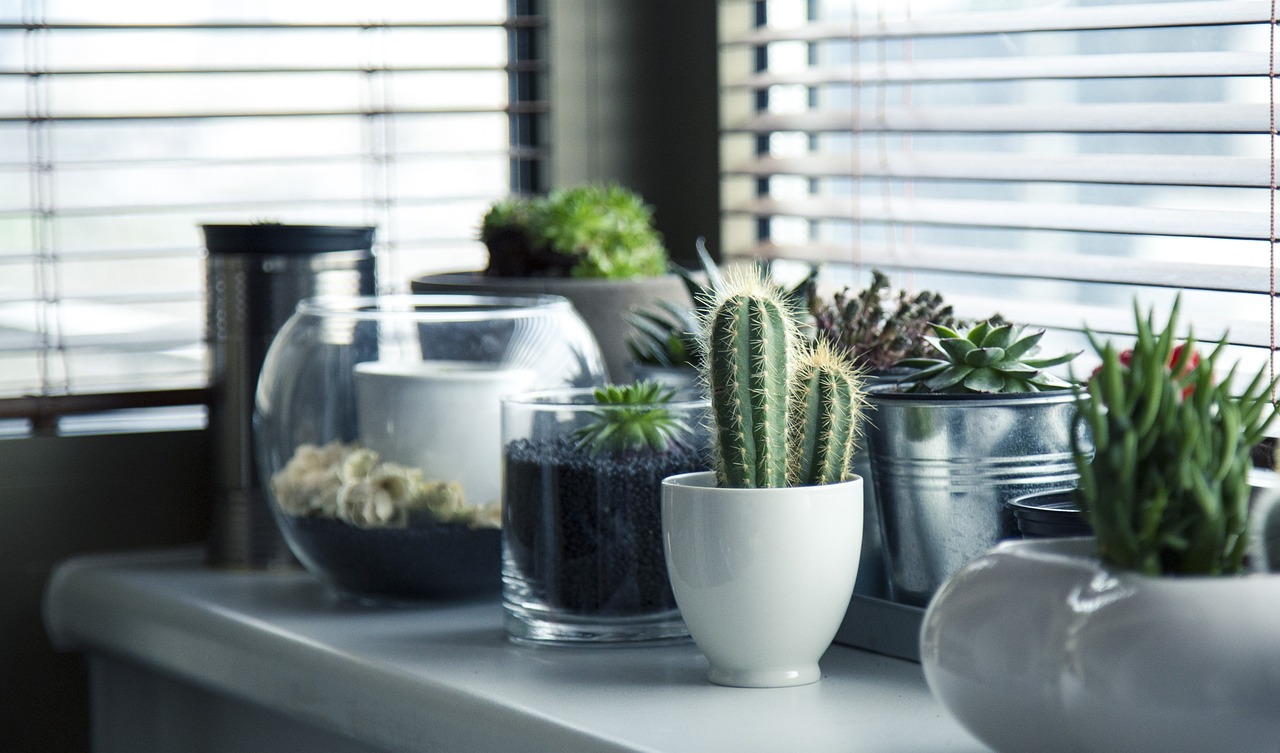
Environmental Sensors
When it comes to safeguarding your home, are your unsung heroes. These devices are designed to detect a variety of hazards that can pose serious risks to your safety and property. Imagine being alerted to a fire or a gas leak before it becomes a disaster; that’s the power of modern technology at work! With the right environmental sensors installed, you can enjoy peace of mind knowing that your home is constantly monitored for potential dangers.
Environmental sensors can detect a range of hazards, including:
- Smoke: Essential for fire safety, smoke detectors alert you at the first sign of smoke, giving you critical time to evacuate.
- Carbon Monoxide: This odorless gas can be deadly, and carbon monoxide detectors can save lives by warning you before levels become dangerous.
- Water Leaks: Water leak detection systems monitor for moisture levels, alerting you to leaks that could lead to extensive damage if left unchecked.
Each of these sensors plays a vital role in creating a safe home environment. For instance, advanced smoke and carbon monoxide detectors not only sound alarms but can also send alerts to your smartphone, allowing you to take action even when you’re not home. Imagine getting a notification while you’re at work that your smoke detector has been triggered—this feature can be a game-changer!
Furthermore, regular maintenance of these devices is crucial. Just like changing the batteries in your smoke detector, ensuring that your environmental sensors are functioning correctly can make all the difference during an emergency. Some systems even come with self-check capabilities, notifying you if they need attention or if their batteries are running low.
Water leak detection systems are particularly important for homeowners, especially in areas prone to flooding or where plumbing issues are common. These systems can be placed in basements, under sinks, or near water heaters to monitor for leaks. When a leak is detected, homeowners receive immediate alerts, allowing them to take swift action to prevent costly damage.
In summary, integrating environmental sensors into your home safety plan not only enhances your security but also protects your property from unforeseen hazards. With the ability to monitor smoke, carbon monoxide, and water leaks, these devices ensure that you and your loved ones are always one step ahead of potential dangers.
Q: How often should I test my smoke and carbon monoxide detectors?
A: It's recommended to test your smoke and carbon monoxide detectors at least once a month and replace the batteries at least once a year.
Q: Can I integrate environmental sensors with my smart home system?
A: Yes! Many environmental sensors can be integrated with smart home systems, allowing you to monitor alerts and control devices remotely.
Q: What should I do if my detector goes off?
A: If your smoke or carbon monoxide detector goes off, evacuate your home immediately and call emergency services. Do not re-enter until it is safe.

Smoke and Carbon Monoxide Detectors
When it comes to home safety, are your first line of defense against two of the most dangerous threats lurking within your walls. Imagine waking up in the middle of the night to the shrill sound of a smoke alarm; that piercing noise could very well save your life. These devices are designed not just to alert you to smoke from a fire but also to detect carbon monoxide, a colorless and odorless gas that can be deadly in high concentrations. The importance of having these detectors installed in your home cannot be overstated, as they offer peace of mind and a sense of security that is invaluable.
Modern smoke and carbon monoxide detectors come equipped with advanced features that enhance their effectiveness. For instance, many of them can now be integrated into your smart home system, allowing for real-time alerts sent straight to your smartphone. This means that even if you're away from home, you can receive notifications if either smoke or carbon monoxide is detected. Isn't that a comforting thought? Furthermore, these devices often have interconnected capabilities, meaning if one unit goes off, all units in the house will sound the alarm, ensuring everyone is aware of the danger.
It's also crucial to remember that regular maintenance of these detectors is essential for their reliability. Just like you wouldn't drive a car without checking the oil, you shouldn't rely on smoke and carbon monoxide detectors without ensuring they are in good working condition. A good practice is to test your detectors monthly and replace the batteries at least once a year. Additionally, many manufacturers recommend replacing the entire unit every 5-10 years, depending on the model. Keeping track of these timelines can be life-saving.
| Detector Type | Features | Recommended Replacement Interval |
|---|---|---|
| Smoke Detector | Photoelectric or Ionization | Every 10 years |
| Carbon Monoxide Detector | Digital Display, Smart Integration | Every 5-7 years |
In conclusion, the integration of smoke and carbon monoxide detectors into your home safety plan is not just a good idea; it’s a necessity. They are simple devices that provide critical protection and can make the difference between life and death in an emergency. So, if you haven’t already installed these detectors, what are you waiting for? Take that step today and ensure your home is as safe as it can be!
- How often should I test my smoke and carbon monoxide detectors? It's recommended to test them monthly.
- What should I do if my detector goes off? Evacuate immediately and call emergency services.
- Can I use a smoke detector without a carbon monoxide detector? While it's possible, it's not advisable. Both provide essential safety measures.
- Where should I install my detectors? Install them on every level of your home, especially near sleeping areas.

Water Leak Detection Systems
Water leak detection systems are becoming an essential part of modern home safety. Imagine waking up in the middle of the night to the sound of rushing water! It’s a nightmare scenario that can lead to extensive damage and costly repairs. With a water leak detection system, homeowners can prevent such disasters by being alerted to leaks before they turn into major issues. These systems use advanced technology to monitor moisture levels in areas prone to leaks, such as basements, under sinks, or near water heaters. When a leak is detected, the system sends an immediate alert to the homeowner's smartphone or a central monitoring service, ensuring that action can be taken swiftly.
One of the best features of these systems is their ability to provide real-time monitoring. Homeowners can check the status of their home’s water levels at any time, giving them peace of mind, especially when they are away. Additionally, many systems can integrate with other smart home devices, creating a comprehensive safety network. For example, if a leak is detected, the system can automatically shut off the water supply to prevent further damage. This level of automation not only saves money on repairs but also protects cherished belongings and keeps the home environment safe.
Another key benefit of water leak detection systems is their ease of installation. Most devices are designed for DIY installation, which means homeowners can set them up without the need for professional help. However, for those who prefer a hands-off approach, many companies offer installation services. Once installed, regular maintenance is minimal, making these systems a hassle-free addition to any home.
To give you a clearer picture of how these systems work, here’s a simple table summarizing their features:
| Feature | Description |
|---|---|
| Real-time Alerts | Instant notifications sent to your smartphone when a leak is detected. |
| Automatic Shut-off | Ability to turn off the water supply to prevent damage. |
| Integration | Works with other smart home devices for enhanced safety. |
| Easy Installation | Designed for DIY setup, with optional professional installation available. |
In conclusion, investing in a water leak detection system is a proactive step toward safeguarding your home. Not only do they help in preventing extensive water damage, but they also provide homeowners with the assurance that they are taking control of their living environment. So, whether you’re a new homeowner or looking to upgrade your current safety measures, consider adding a water leak detection system to your home safety arsenal.
- What types of leaks can water leak detection systems detect? Most systems can detect leaks from plumbing fixtures, appliances, and even floods from external sources.
- Do I need a professional to install a water leak detection system? No, many systems are designed for easy DIY installation, but professional help is available if needed.
- Can I integrate water leak detectors with my existing smart home system? Yes, many water leak detection systems are compatible with popular smart home platforms, allowing for seamless integration.
- How often should I check my water leak detection system? Regularly check the batteries and functionality of the system, ideally every few months, to ensure it is working properly.

Emergency Response Systems
When it comes to ensuring the safety of our homes and loved ones, play a pivotal role. These systems are designed to provide immediate assistance in times of crisis, ensuring that help is always just a button press away. Imagine being in a situation where every second counts—having a reliable emergency response system can be the difference between a minor incident and a major disaster.
One of the most common types of emergency response systems is the medical alert device. These devices are particularly vital for seniors or individuals with health concerns. They allow users to call for help quickly, which can be a lifesaver in emergencies such as falls, heart attacks, or other medical issues. With just a simple press of a button, users can connect to emergency services or designated contacts, providing peace of mind not only for them but also for their families.
In addition to medical alert devices, it's crucial to establish a comprehensive home emergency plan. This plan should outline the steps every family member needs to take in case of an emergency. For instance, it might include designated meeting points, emergency contact numbers, and specific actions to take during various scenarios, such as fire, flood, or medical emergencies. By having a well-thought-out plan, families can significantly improve their safety and response times during crises.
To illustrate the importance of emergency response systems, consider the following table that compares different types of systems available:
| Type of System | Features | Ideal For |
|---|---|---|
| Medical Alert Devices | Wearable, one-button call for help | Seniors, individuals with health issues |
| Home Security Systems | 24/7 monitoring, alarm notifications | All homeowners |
| Fire Alarm Systems | Smoke detection, automatic alerts | Every home |
Moreover, technology has advanced to the point where many of these systems can be integrated into your smart home setup. This means that not only can you receive alerts on your phone, but you can also monitor your home environment remotely. For example, if a smoke detector goes off, you could receive an instant notification on your smartphone, allowing you to take action even when you're not home.
However, it's essential to recognize that while these systems offer enhanced safety, they are not foolproof. Regular maintenance and testing of devices, as well as educating all family members about the emergency response plan, are critical components to ensure their effectiveness. After all, what good is a system if no one knows how to use it?
In conclusion, integrating emergency response systems into your home not only enhances safety but also provides a greater sense of security for everyone living there. By taking proactive steps—whether through medical alert devices, comprehensive emergency plans, or smart home integrations—you can create a safer living environment that stands ready to respond to any emergency.
- What types of emergency response systems are available? There are various types, including medical alert devices, home security systems, and fire alarm systems.
- How do medical alert devices work? These devices allow users to call for help with just the press of a button, connecting them to emergency services or designated contacts.
- Is it necessary to have a home emergency plan? Yes, having a plan is crucial as it helps all family members know what to do in case of an emergency, improving safety and response times.

Medical Alert Devices
Medical alert devices are essential tools designed to provide immediate assistance in emergencies, especially for seniors or individuals with health concerns. Imagine a scenario where an elderly person slips and falls at home. In such a moment of distress, having a medical alert device can be a literal lifesaver. These devices empower users to call for help quickly, ensuring that assistance is just a button press away. This peace of mind is invaluable, not only for the users but also for their families, who can rest easy knowing that help is readily available.
Most medical alert devices come equipped with features that enhance their functionality. For example, many devices offer:
- Fall Detection: Automatically detects falls and sends alerts without the user needing to press the button.
- GPS Tracking: Allows for location tracking, ensuring help can find the user, even if they are away from home.
- Two-Way Communication: Enables direct communication with emergency responders, providing crucial information about the situation.
When choosing a medical alert device, it's important to consider various factors to ensure it meets the user's needs. Here are some key considerations:
| Feature | Description |
|---|---|
| Battery Life | Long-lasting batteries are essential to ensure the device is always operational. |
| Range | Look for devices with a good range, especially if the user has a large home or yard. |
| Subscription Fees | Some devices require monthly fees for monitoring services, so consider the long-term costs. |
| Ease of Use | Devices should be simple to operate, especially for those who may not be tech-savvy. |
In conclusion, medical alert devices are more than just gadgets; they are lifelines that enhance safety and provide peace of mind. By ensuring that help is always within reach, these devices foster independence for seniors and individuals with health issues. As technology continues to evolve, we can expect even more innovative features that will further improve the effectiveness of these life-saving devices.
- What is a medical alert device? A medical alert device is a wearable gadget that allows individuals to call for help in emergencies.
- How does a medical alert device work? Most devices work by pressing a button that connects the user to emergency services or a monitoring center.
- Do I need a landline for a medical alert device? Many modern devices operate over cellular networks, so a landline is not always necessary.
- Can I use a medical alert device outside my home? Yes, many devices come with GPS tracking and can be used outside, providing safety wherever you go.
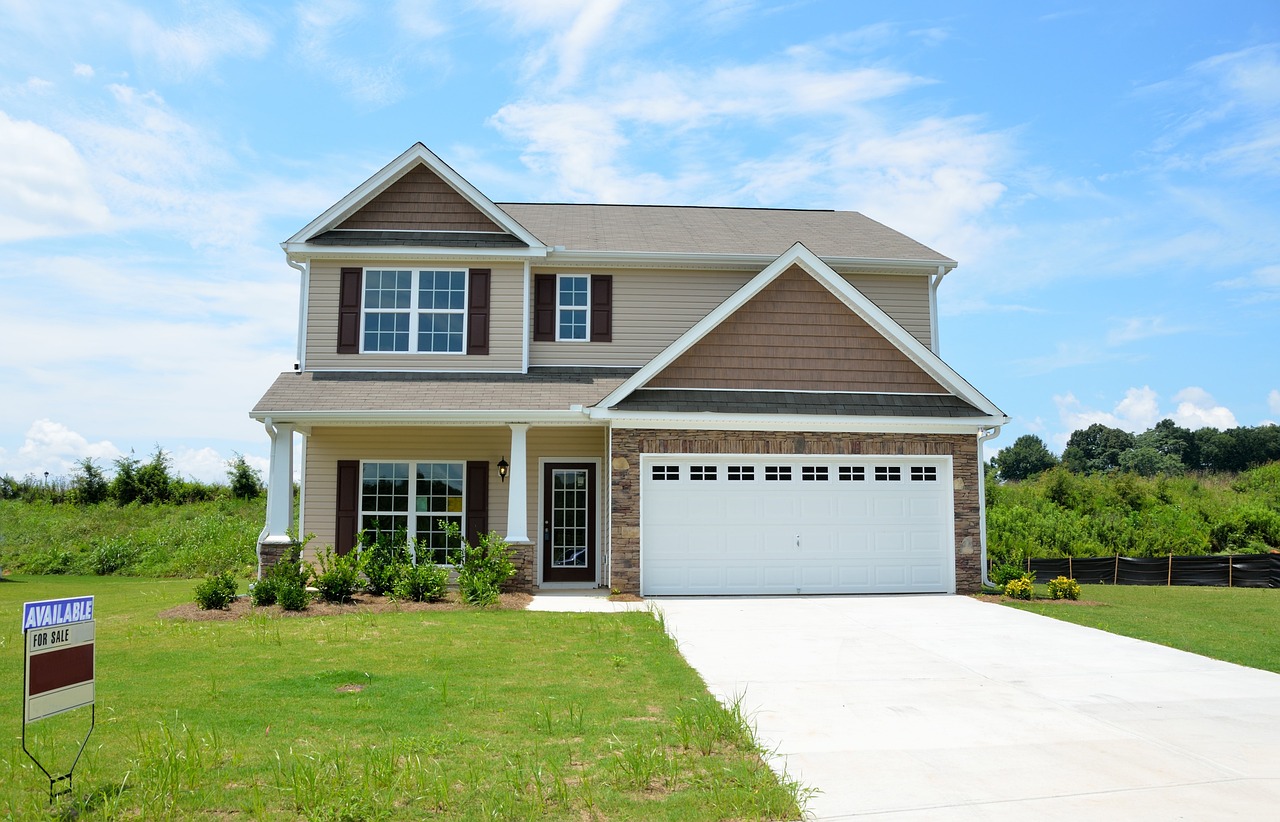
Home Emergency Plans
Establishing a home emergency plan is not just a good idea; it’s a necessity for every household. Imagine this: a fire breaks out or a natural disaster strikes. What would you do? Would your family know how to react? A well-thought-out emergency plan can mean the difference between chaos and calm during a crisis. It provides a clear roadmap for your family, ensuring everyone knows their roles and responsibilities.
First and foremost, it's essential to involve every family member in the planning process. This inclusion fosters a sense of responsibility and awareness among all ages. Start by identifying potential emergencies that could occur in your area, such as fires, earthquakes, or severe storms. Once you've established these possibilities, you can tailor your emergency plan to address them effectively.
Next, create a detailed communication plan. In the chaos of an emergency, it’s crucial to have a way to contact each other. Designate a family member who lives outside your immediate area as a point of contact. This person can help coordinate communication if local lines are down. Make sure everyone has the contact information saved in their phones and written down in a visible place at home.
Another vital component is establishing escape routes. Walk through your home and identify at least two exit points from each room. Make sure that everyone knows these routes and practices them regularly. You might even consider creating a simple map of your home that highlights these exits and post it in common areas. This way, in the event of an emergency, everyone can quickly refer to the map and know where to go.
Furthermore, consider conducting regular drills. Just like fire drills at school, practicing your emergency plan at home can help solidify everyone's understanding of what to do. Schedule these drills at least twice a year, and vary the times to simulate different scenarios. This practice not only prepares your family but also helps to ease anxiety about emergencies.
Lastly, don't forget to have an emergency kit ready. This kit should include essentials like first aid supplies, bottled water, non-perishable food, flashlights, batteries, and any necessary medications. Make sure to keep it in an accessible location and check it regularly to ensure everything is up to date. You might even consider creating a table of items to include, like this:
| Item | Quantity | Notes |
|---|---|---|
| First Aid Kit | 1 | Check for expired items regularly |
| Bottled Water | 1 gallon per person | Replace every six months |
| Non-perishable Food | 3-day supply | Rotate stock every six months |
| Flashlight | 2 | Include extra batteries |
| Whistle | 1 | For signaling help |
In summary, a comprehensive home emergency plan is a crucial element of home safety. By involving the entire family, preparing communication strategies, establishing escape routes, conducting drills, and maintaining an emergency kit, you can significantly enhance your family's preparedness for any situation. Remember, it’s better to be safe than sorry, and having a plan in place can provide peace of mind knowing that you are ready for whatever comes your way.
- What is the first step in creating a home emergency plan?
Begin by identifying the potential emergencies that could occur in your area and discussing them with your family. - How often should we practice our emergency plan?
It’s recommended to conduct drills at least twice a year, varying the times to simulate different scenarios. - What should be included in an emergency kit?
Your kit should include essentials like first aid supplies, water, food, flashlights, and any necessary medications.
Frequently Asked Questions
- What are smart security systems and how do they work?
Smart security systems are advanced setups that combine alarms, cameras, and sensors to protect your home. They work by monitoring your property in real-time, sending alerts to your smartphone if any unusual activity is detected. This means you can keep an eye on your home even when you're miles away!
- How can home automation enhance my home safety?
Home automation allows you to control various devices like lights, locks, and appliances from your smartphone or tablet. This means you can set schedules, turn lights on or off remotely, and even lock doors from anywhere. Not only does this boost security, but it also helps save energy and gives you peace of mind.
- What are smart locks and how do they improve security?
Smart locks are keyless entry systems that let you manage access to your home through your smartphone. They offer features like temporary access codes for guests, making it easy to control who can enter your property. This eliminates the need for traditional keys, which can be lost or stolen.
- Can I monitor my home remotely?
Absolutely! With remote access features, you can check security feeds, lock doors, and receive alerts from anywhere in the world. This constant oversight means you're always in control, no matter where life takes you.
- What role do surveillance cameras play in home safety?
Surveillance cameras are essential for deterring crime and providing evidence if something goes wrong. Modern cameras offer high-definition video, night vision, and cloud storage, ensuring that you have clear footage of any incidents that may occur.
- What are environmental sensors and why are they important?
Environmental sensors detect hazards like smoke, carbon monoxide, and water leaks. They alert homeowners to these dangers, allowing for quick responses that can prevent serious damage or health risks. Having these sensors in place is like having an extra set of eyes looking out for your safety.
- How do smoke and carbon monoxide detectors work?
Advanced smoke and carbon monoxide detectors provide real-time alerts and can connect to your smart home system. They continuously monitor the air for dangerous levels of smoke or gas, ensuring that you and your family are alerted immediately in case of an emergency.
- What is a water leak detection system?
A water leak detection system monitors your home for leaks and moisture levels. If a leak is detected, it sends an alert to your phone, allowing you to take action before costly damage occurs. Think of it as your home's early warning system against water damage!
- What are emergency response systems?
Emergency response systems, such as medical alert devices, provide immediate assistance during emergencies. They ensure that help is just a button press away, which is especially important for seniors or individuals with health concerns. This feature can greatly enhance overall safety and peace of mind.
- How can I create a home emergency plan?
Establishing a home emergency plan involves discussing potential emergencies with your family and deciding on clear steps to take in each situation. This preparedness can significantly improve safety and response times during crises, making sure everyone knows what to do when it counts.

